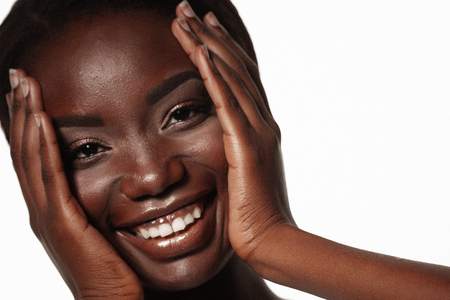Introduction to Hyperpigmentation
Hyperpigmentation is a term that describes areas of skin that become darker than the surrounding skin, creating uneven patches or spots. This condition happens when an excess of melanin—the pigment responsible for our skin color—is produced and deposited in certain areas. While hyperpigmentation is not harmful, it can be distressing and affect confidence for many people. In the United States, this skin concern is especially common due to diverse ethnic backgrounds, varying climates, and high sun exposure rates across the country. Whether you’re dealing with stubborn sun spots after a summer at the beach, melasma triggered by hormonal changes, or dark marks left behind from acne (post-inflammatory hyperpigmentation, or PIH), understanding what sets these types of discoloration apart is key to finding the right treatment—and feeling empowered in your own skin.
What is Melasma?
Melasma is a common skin condition characterized by the appearance of brown, gray-brown, or bluish patches, most often on the face—especially the cheeks, forehead, upper lip, and chin. Unlike simple sun spots or PIH (post-inflammatory hyperpigmentation), melasma tends to have a symmetrical pattern and can be persistent, making it uniquely challenging for those who experience it.
Description and Causes
Melasma develops when melanocytes—the cells that produce pigment in your skin—become overactive. This overactivity is usually triggered by a combination of factors. The primary causes include:
| Cause | Description |
|---|---|
| Sun Exposure | UV light stimulates melanocytes, worsening melasma. |
| Hormonal Changes | Common during pregnancy (“the mask of pregnancy” or chloasma), birth control use, or hormone therapy. |
| Genetics | Family history increases risk; certain ethnicities are more prone. |
| Certain Medications & Skin Care Products | Some drugs and products can make skin more sensitive to sunlight. |
Who Does It Affect Most?
Melasma is more prevalent among women—especially those with darker skin tones (Fitzpatrick skin types III–VI) including Latinx, Asian, Middle Eastern, and African American communities. While men can develop melasma, they represent only about 10% of cases. In the U.S., the cultural narrative often associates melasma with hormonal changes in women’s lives (like pregnancy), but it impacts individuals from many backgrounds and identities.
Cultural Narratives in American Society
In American society, conversations about melasma intersect with beauty standards and evolving ideas around self-acceptance. Historically, hyperpigmentation has sometimes been stigmatized or misunderstood. However, social media has helped create space for diverse voices to share their journeys with melasma—challenging colorism and promoting inclusive beauty. This shift encourages everyone to embrace their skin while seeking effective care options rooted in science rather than shame.

3. Sun Spots: The Result of Fun in the Sun
Sun spots, also known as age spots or liver spots, are one of the most common forms of hyperpigmentation seen across the United States. These flat, brown, or black patches usually appear on areas of the skin that get the most sun exposure—think face, hands, shoulders, and arms. Unlike melasma, which is often triggered by hormonal changes, sun spots are directly linked to ultraviolet (UV) radiation. Over time, repeated sun exposure causes an increase in melanin production as your body tries to protect itself from UV damage. This explains why these spots tend to pop up more as we get older and accumulate years of outdoor fun.
The American lifestyle often celebrates outdoor activities—whether it’s backyard barbecues, beach trips, hiking, or simply running errands under the sun. While these activities bring joy and health benefits, they also mean more time spent soaking up those UV rays. Sunscreen use has become more mainstream in recent years, but historically many people skipped this crucial step or relied on tanning oils instead. Additionally, some Americans still associate a sun-kissed glow with health and vitality, leading to intentional tanning and even regular visits to tanning beds. All these habits can accelerate the development of sun spots over time.
It’s important to note that while sun spots themselves are harmless and don’t turn into skin cancer, their appearance signals significant UV exposure—a risk factor for other skin problems including melanoma. So, understanding how our everyday routines contribute to their formation is key for prevention. Wearing broad-spectrum sunscreen daily (yes, even on cloudy days), seeking shade during peak hours, and sporting protective clothing are all smart strategies for anyone hoping to keep their skin even-toned and healthy.
4. Post-Inflammatory Hyperpigmentation (PIH) Explained
Post-inflammatory hyperpigmentation, or PIH, is a form of darkening that occurs after the skin experiences inflammation or injury. In the U.S., PIH is widely recognized for its impact across all skin types, but it tends to be more noticeable and longer-lasting in people with medium to deep skin tones. Understanding the triggers and prevalence of PIH can help individuals take proactive steps to prevent and manage it effectively.
Common Triggers for PIH
The most frequent causes of PIH include:
| Trigger | Example |
|---|---|
| Acne | Pimples and cystic breakouts that heal with dark spots |
| Injuries | Cuts, scrapes, or burns that leave discolored marks |
| Skin Treatments | Laser procedures, waxing, or chemical peels gone wrong |
| Eczema & Allergic Reactions | Itchy rashes that cause scratching and subsequent dark spots |
PIH Prevalence Among Diverse Skin Tones
PIH does not discriminate, but it is particularly prevalent among Americans with Black, Latinx, Asian, Middle Eastern, or Native backgrounds. This is due to higher melanin production in these skin types, which means any trauma or irritation can trigger more pronounced pigmentation changes. In clinical studies and dermatology practices throughout the United States, PIH is cited as one of the top reasons patients with darker skin seek treatment.
Why Is PIH More Noticeable in Deeper Skin Tones?
The higher baseline melanin in deeper skin acts like a double-edged sword: while it offers some protection against sun damage, it also responds robustly to inflammation by creating more pigment. Even minor acne can leave behind stubborn marks that linger for months or even years without proper care.
Cultural Awareness: Navigating Stigma and Solutions
In American communities—especially those prioritizing skincare education—awareness about PIH is growing. Many people are turning to gentle skincare routines and professional guidance rather than harsh DIY remedies that may worsen the problem. Open discussions on platforms like social media have empowered individuals from all backgrounds to share their stories and best practices for healing hyperpigmentation.
5. Spotting the Differences: Key Features & How to Tell Them Apart
Melasma
Appearance
Melasma typically presents as symmetrical, patchy areas of brown or gray-brown discoloration, most often on the cheeks, forehead, upper lip, and chin. The borders are usually irregular but well defined.
Causes
This condition is primarily driven by hormonal changes—think pregnancy, birth control pills, or hormone therapy—but it’s also triggered by sun exposure. Genetics can also play a role.
Affected Demographics
Melasma is most common in women, especially those with medium to darker skin tones (Fitzpatrick skin types III-VI). It’s sometimes called “the mask of pregnancy” due to its prevalence among pregnant people.
Sun Spots (Solar Lentigines)
Appearance
Sun spots—also known as age spots or liver spots—are flat, oval, and usually light brown to black. They’re generally smaller than melasma patches and have very distinct edges. You’ll spot them on areas frequently exposed to the sun: face, hands, shoulders, and arms.
Causes
The main culprit here is cumulative sun exposure over time. UV rays accelerate melanin production, leading to these pigmented spots as we age.
Affected Demographics
Sun spots are most common in older adults (typically 40+), regardless of gender. Fair-skinned individuals tend to notice them more easily due to contrast with their natural skin tone.
Post-Inflammatory Hyperpigmentation (PIH)
Appearance
PIH shows up as flat spots or patches that range from pink to red, brown, or black—depending on your skin tone. These marks appear where the skin has healed after inflammation or injury (like acne, eczema flare-ups, or cuts).
Causes
This type of hyperpigmentation follows trauma or irritation. When the skin repairs itself after inflammation, it sometimes produces excess pigment as a part of the healing process.
Affected Demographics
Anyone can get PIH, but it’s especially common in people with medium to dark skin tones since their melanocytes respond more strongly to injury.
The Takeaway
If you’re trying to distinguish between these types of hyperpigmentation: look at the pattern (patchy vs. spotty), consider your history (sun exposure, hormones, recent breakouts), and factor in your skin tone and age. These clues can help you figure out what’s going on—and guide you toward the best treatment plan with your dermatologist.
6. Treatment & Prevention: What Works in the U.S.
Overview of Popular Treatment Options
When it comes to tackling hyperpigmentation in the United States, the approach often depends on the underlying cause—melasma, sun spots, or PIH (post-inflammatory hyperpigmentation). Over-the-counter products containing ingredients like hydroquinone, niacinamide, vitamin C, and retinoids are widely used for mild cases. Chemical peels, microdermabrasion, and laser therapies are also popular procedures offered by dermatologists for more stubborn pigmentation. For melasma specifically, gentle treatment is key due to its sensitivity; combination creams and non-ablative laser treatments are commonly recommended.
Dermatologist-Approved Methods
Board-certified dermatologists across the U.S. emphasize a personalized approach. Prescription-strength topicals such as tretinoin or azelaic acid can be highly effective, especially for PIH and melasma. In-office treatments like IPL (intense pulsed light) and fractional lasers are gaining traction for sun spots, but they’re not suitable for every skin tone—especially darker skin types due to risk of worsening pigmentation. That’s why many experts recommend patch testing and a tailored skincare plan based on your unique skin type and history.
Culturally Relevant Prevention Strategies
Prevention is just as important as treatment—and in the diverse U.S., this means recognizing cultural skincare habits and needs. Daily sunscreen use (SPF 30 or higher) is universally recommended regardless of skin tone, but community education efforts now focus on spreading awareness among people of color who may believe they’re less at risk from sun damage. Hats, sunglasses, and seeking shade during peak hours are practical tips that resonate across American lifestyles. For those prone to PIH due to acne or eczema, gentle cleansing routines and avoiding harsh scrubbing are promoted within multicultural communities.
Empowering Self-Care Across Communities
The conversation around hyperpigmentation is shifting toward inclusion and self-acceptance. Whether you’re managing melasma after pregnancy, fading sun spots from outdoor adventures, or addressing PIH related to acne, the best results come from combining evidence-based treatments with culturally relevant prevention strategies—and embracing your skin’s unique journey.
7. When to Seek Expert Help
While learning about melasma, sun spots, and post-inflammatory hyperpigmentation (PIH) empowers you to make informed decisions, there are times when seeing a dermatologist is the best move for your skin health. If you notice any sudden changes in your pigmentation—such as rapid darkening, irregular borders, bleeding, or changes in texture—it’s crucial to consult a specialist right away, as these could be signs of more serious conditions.
Persistent hyperpigmentation that doesn’t respond to over-the-counter treatments or lifestyle adjustments is another signal to reach out for professional guidance. Dermatologists can provide tailored care plans and recommend prescription-strength solutions or advanced therapies like chemical peels, lasers, or microneedling that are safe and effective for a wide range of skin tones.
Advocating for your skin health is an act of self-respect. Don’t hesitate to ask questions about how treatments may affect your specific skin type or cultural background—your concerns are valid and deserve attention. If you ever feel misunderstood or dismissed, remember that you have the right to seek a provider who respects your unique needs and offers culturally sensitive care.
Finally, embracing diversity in skin types means recognizing that everyone’s journey with hyperpigmentation is different. Whether you’re navigating melasma after pregnancy, dealing with stubborn sun spots from outdoor adventures, or managing PIH from acne scars, know that seeking expert help is not just okay—it’s often the smartest step towards healing and confidence.


